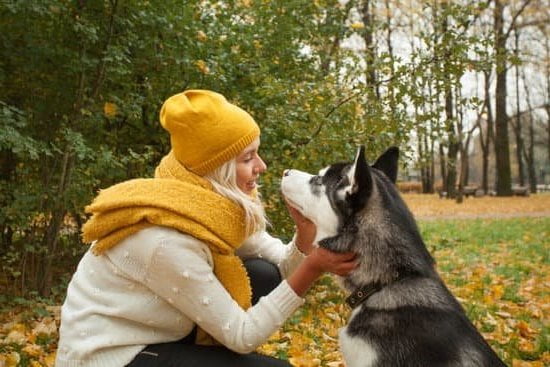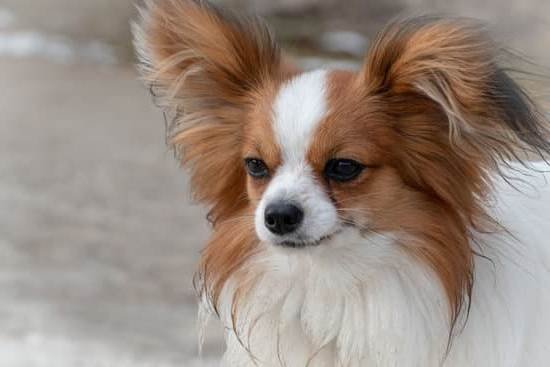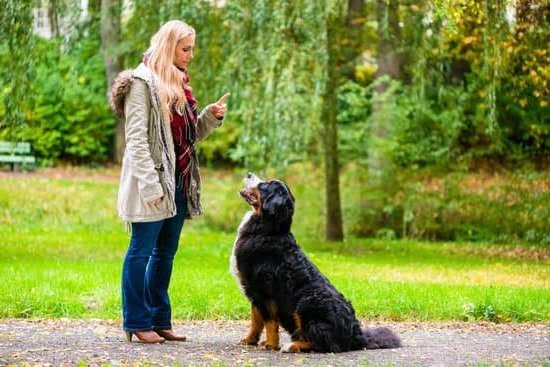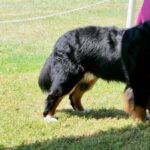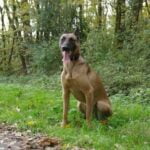Training a dog to hunt is an art that requires patience, skill, and dedication. Whether you’re a seasoned hunter or just starting out, having a well-trained hunting dog can greatly enhance your hunting experience. In this article, we will explore the intricacies of training a dog to hunt and provide valuable insights into the process.
The importance of training a dog for hunting purposes cannot be overstated. A well-trained hunting dog not only increases your chances of success in the field but also ensures safety for both you and your canine companion. From obedience commands to specialized skills like scent detection and retrieving, training equips dogs with the necessary tools to perform their tasks effectively.
Having a well-trained hunting dog offers numerous benefits. First and foremost, it allows for better communication between you and your furry partner. This strengthens the bond between you as a team and enhances your ability to work together seamlessly. Additionally, a well-trained hunting dog is more reliable when it comes to tracking game, retrieving shot birds, and staying focused in the midst of distractions. This ultimately improves your overall efficiency as a hunter.
In the following sections, we will delve deeper into understanding different hunting dog breeds, preparing for the training process, teaching basic obedience commands, introducing hunting concepts and techniques, specialized training for specific tasks, troubleshooting common challenges during training, and maintaining and fine-tuning hunting skills. By focusing on these aspects of training, you will be equipped with the knowledge needed to nurture a lifelong hunting companion and elevate your hunting experience to new heights.
Understanding the Different Hunting Dog Breeds
When it comes to training a dog to hunt, it is important to understand the different hunting dog breeds and their unique characteristics. Each breed has been selectively bred over generations for specific hunting purposes, and their traits and instincts make them well-suited for various types of hunting. By choosing the right breed for your specific hunting needs, you can set yourself up for success in training your hunting companion.
There are several popular breeds commonly used for hunting, each with their own set of strengths and abilities. Some common breeds include:
- Labrador Retriever: Known for their intelligence and excellent retrieving skills, Labradors are often used in waterfowl hunting. They have a gentle nature, making them great family pets as well.
- German Shorthaired Pointer: These athletic dogs have exceptional scenting ability and are highly versatile hunters. They excel in upland bird hunting and tracking game.
- Beagle: Beagles are known for their keen sense of smell and endurance when tracking scents on the ground. They are commonly used in rabbit or hare hunting.
- Golden Retriever: Similar to Labradors, Golden Retrievers possess excellent retrieving skills and make great companions in waterfowl hunting. They also have a friendly temperament that makes them suitable for families.
- English Springer Spaniel: With their energetic nature and natural flushing abilities, English Springer Spaniels are popular choices for upland bird hunting.
When choosing a breed, it is crucial to consider what type of game you plan to hunt, as different breeds are suited for different tasks. For example, if you’re interested in waterfowl hunting, Labradors or Golden Retrievers would be good options due to their retrieving abilities and love for water.
On the other hand, if you’re focused on upland bird hunting or tracking game, German Shorthaired Pointers or English Springer Spaniels may be more fitting due to their specific hunting traits.
Once you have chosen the right breed for your hunting needs, you can then begin to understand their unique characteristics and adapt your training methods accordingly. Taking into consideration a dog’s natural instincts and tendencies will greatly enhance your ability to train them effectively and nurture their hunting potential.
Preparing for the Training Process
Training a hunting dog requires proper preparation to ensure a successful and effective training process. This section will discuss the necessary equipment and tools, creating a conducive training environment, and establishing a strong bond with your dog before commencing training.
One of the first steps in preparing to train a hunting dog is to gather the right equipment and tools. Some essential items include a sturdy leash, collar, and whistle for communication during training exercises. Additionally, incorporating appropriate training aids such as retrieving dummies or scent pads can help simulate real hunting scenarios. It is important to invest in high-quality equipment that is suitable for your dog’s breed and size, ensuring safety and efficiency during training sessions.
Creating an environment conducive to learning is crucial for successful training. Choose a safe and spacious outdoor area where distractions are minimized. A fenced yard or designated training field can provide the necessary space for your dog to move freely without the risk of running off or getting injured. By creating this dedicated space, you can focus solely on training without interruptions from other animals or people.
Before starting formal training exercises, it is critical to establish a strong bond and trust with your hunting dog. Spend quality time together engaging in activities such as playtime or casual walks to build a connection. Positive reinforcement through treats, praise, and affection will help strengthen this bond further.
Take note of your dog’s temperament and personality traits while determining the best approach in building trust. Remember that patience is key during this bonding phase, as it sets the foundation for successful training later on.
| Equipment | Description |
|---|---|
| Leash | A sturdy leash for control during training exercises. |
| Collar | A collar that fits properly and allows for effective communication. |
| Whistle | A whistle for specific commands or recall training. |
| Retrieving dummies | Training aids to simulate real hunting scenarios. |
| Scent pads | Aids in introducing scent detection during training. |
Basic obedience training for hunting dogs
Basic obedience training is an essential foundation for training a hunting dog. Before diving into the specific hunting skills and techniques, it is important to establish a strong obedience base for your dog. This section will outline the fundamental commands and skills that every hunting dog should learn, as well as provide step-by-step instructions for effective training.
The first command that should be taught to a hunting dog is “heel.” Heel refers to the position where the dog walks calmly and closely beside its handler. This command is crucial during hunts as it ensures that the dog stays close and does not disrupt or scare away potential game.
To train the heel command, start by walking with your dog on a leash beside you. Use consistent verbal cues such as “heel” or “walk,” and reward your dog with treats or praise when they stay in the correct position.
Another important command is “sit.” A hunting dog must be able to sit patiently while waiting for instructions during a hunt. To train this command, hold a treat above your dog’s head and slowly move it backwards over their head, encouraging them to sit naturally. As soon as their bottom touches the ground, reward them with a treat and positive reinforcement.
The “stay” command is also vital for hunting dogs. It allows you to keep control of your dog while you set up shots or make decisions during a hunt. Start by having your dog sit or lie down, then give the verbal cue “stay” while holding your hand up in front of their face like a stop sign. Gradually increase the duration of time between issuing the cue and releasing them with another command.
Lastly, teaching recall is crucial for safety during hunts. The recall command ensures that your dog returns promptly to you when called upon, regardless of distractions in their environment. To train recall, use a long-line leash in an enclosed area initially. Call out your dog’s name followed by the cue word “come.” Reward them with treats and praise when they successfully come to you.
Consistency and positive reinforcement are key throughout the training process. It is important to repeat each command consistently, use clear verbal cues, and reward your dog for correct behavior. Additionally, varying the training sessions by incorporating different environments and hunting scenarios will help your dog generalize their skills.
By establishing a strong foundation of basic obedience commands, you provide your hunting dog with the discipline and control necessary for successful hunts. Once these fundamental commands are mastered, you can move on to introducing hunting concepts and techniques in the next section of training.
Introducing Hunting Concepts and Techniques
Training a hunting dog goes beyond basic obedience commands. It is essential to introduce hunting concepts and techniques to prepare them for the specific tasks they will encounter in the field. This section will explain the core hunting concepts that dogs need to understand, offer strategies for introducing these concepts gradually, and highlight the role of the trainer in shaping their hunting instincts.
One of the key concepts that every hunting dog should grasp is scent detection. Dogs have an incredible sense of smell, which makes them valuable assets in locating game. Training dogs to identify and follow scents is crucial for successful hunting. The trainer can start by introducing scent games using scent-detecting toys or treats. Gradually, they can progress to using real game scents, enabling the dog to associate specific smells with potential targets.
Tracking is another critical skill that a hunting dog should master. The ability to track game is necessary for locating wounded animals or following a trail during hunts. Trainers can start by teaching dogs to focus on tracking scents on the ground or through simple tracking exercises in a controlled environment. As dogs improve, trainers can increase difficulty by extending track lengths or adding distractions along the trail.
Retrieving is yet another important skill that hunters expect from their dogs. Retrieving ensures that downed game is brought back to their handler without damage, minimizing waste and ensuring ethical hunting practices. Teaching retrieving skills can involve training dogs to retrieve simple objects like dummies or toys initially. As they progress, trainers can introduce more complex scenarios like retrieving shot birds or larger game using specialized equipment.
As a trainer, it is important to understand that each dog will have different learning curves and abilities. Some may naturally excel at certain concepts while struggling with others. It is crucial to be patient and ensure training sessions are enjoyable for both you and your dog.
| Concept | Description |
|---|---|
| Scent Detection | Teaching dogs to identify and follow scents associated with potential game targets. |
| Tracking | Training dogs to follow scent trails left by wounded animals or during hunts. |
| Retrieving | Developing a dog’s ability to bring downed game back to the handler without damage. |
By gradually introducing hunting concepts and techniques, trainers can help their dogs develop the necessary skills for successful hunting. It is important to tailor the training methods to each dog’s individual strengths and weaknesses. With patience, consistency, and positive reinforcement, hunters can shape their dogs into invaluable companions in the field.
Specialized Training for Specific Hunting Tasks
Types of Hunting
Before delving into specialized training for specific hunting tasks, it is important to understand the different types of hunting that dogs can be trained for. Upland bird hunting, waterfowl hunting, and big game hunting are three common types of hunting where specialized training may be required. Each type has its unique set of skills and techniques that a well-trained dog must possess.
Upland bird hunting involves flushing birds from cover and retrieving them after they are shot. For this type of hunting, dogs need to have excellent scent detection abilities, be proficient in tracking, and have a strong retrieve instinct. Waterfowl hunting takes place in wetland environments and requires dogs to retrieve dead or wounded birds from water. Dogs trained for waterfowl hunting should have good swimming abilities, be comfortable working in cold water conditions, and possess strong retrieving skills.
Big game hunting typically involves tracking and trailing large animals such as deer or boar. Dogs trained for big game hunting need to have superior scent detection capabilities, be able to track scents over long distances, and show perseverance in sticking with a trail until the target animal is found. It is essential to tailor the dog’s training specifically to the type of hunting desired in order to maximize their effectiveness in the field.
Tailoring Training Methods
Once you have determined the specific type of hunting you plan on pursuing with your dog, it is crucial to tailor their training accordingly. While basic obedience commands and skills are universal across all types of hunting dogs, there may be certain specialized techniques or behaviors that need additional focus.
For upland bird hunters, incorporating training exercises that simulate flushing out birds from cover can help develop a dog’s natural instincts for this type of task. Introducing live birds during training sessions can help familiarize them with the sights, sounds, and smells associated with upland bird hunting.
Waterfowl hunters should focus on training their dogs to remain calm on a boat or in a blind, as well as perfecting water retrieves and handling birds with care. Regular practice sessions in wetland environments, including exposure to decoys and boat work, can help prepare the dog for realistic hunting scenarios.
For big game hunters, tracking exercises using scent trails or blood trails are crucial to developing the dog’s tracking abilities. Incorporating tasks that simulate recovering wounded animals and practicing tracking scents across various terrains can help sharpen their skills.
Developing Specialized Skills
In addition to tailoring training methods, consider incorporating exercises that develop specific specialized skills required for the chosen type of hunting. For example, upland bird hunters may want to focus on teaching their dogs to honor another dog’s point – meaning they must respect the point of a fellow hunting companion without interfering. Waterfowl hunters can train their dogs to mark fallen birds and wait patiently until sent for a retrieve command.
With big game hunting, it is crucial to teach dogs complex behaviors such as quietness on command to prevent alerting game, circling wounded animals without disturbing them further, and dragging large game back to the hunter.
By providing targeted training opportunities that mimic real-life hunting situations, you can help your dog develop the specialized skills needed for efficient and successful hunts in your chosen field of pursuit. Remember that each type of hunting requires specific knowledge and techniques; therefore, it is essential to do thorough research or seek guidance from experienced trainers when developing specialized training programs for your dog’s chosen role.
Troubleshooting common training challenges
Addressing Distractions and Lack of Focus
One common challenge that dog owners may face during the training process is distractions causing their hunting dog to lose focus. Whether it’s a squirrel running by or a loud noise in the environment, it’s important to understand how to address these distractions effectively. The key is to gradually expose the dog to distractions in a controlled manner.
Start with minimal distractions and gradually increase the level of difficulty as the dog becomes more comfortable and focused. It’s also helpful to use high-value treats or rewards to keep the dog engaged during training sessions.
If your hunting dog struggles with maintaining focus during training, incorporating mental stimulation exercises into their routine can be highly beneficial. Puzzle toys, obedience challenges, and scent work activities are all great ways to engage your dog mentally and improve their ability to concentrate. Regular exercise sessions can also help release excess energy and increase your dog’s ability to concentrate during training.
Dealing with Disobedience
Another common challenge that may arise during training is disobedience from your hunting dog when they refuse or ignore commands. It’s important to remember that dogs thrive on consistency, so make sure you are using clear and consistent signals for each command. If your dog continues to be disobedient, it may be necessary to revisit basic obedience training and reinforce the foundational commands they have learned.
In instances where your hunting dog displays stubborn behavior, it’s crucial not to resort to punishment or forceful methods. Instead, focus on positive reinforcement techniques such as rewarding good behavior with treats or praise. Use their favorite toy or treat as a motivation for compliance.
Adapting Training Techniques
Every hunting dog is unique, and what works for one breed may not work for another. It is essential for trainers to adapt their techniques based on their individual dog’s personality, breed characteristics, and learning style. For example, some breeds may respond better to a more assertive training approach, while others may require a gentler and more patient training method.
It’s important to be flexible and open-minded when troubleshooting training challenges. Take the time to observe how your dog responds to different methods and adjust accordingly. Seek guidance from professional trainers or experienced hunters if you are unsure about the best approach for addressing specific training difficulties. Remember, every dog is different, and finding the right method for your hunting companion may take time and experimentation.
Maintaining and Fine-tuning Hunting Skills
Once a hunting dog has been trained and has developed the fundamental skills needed for hunting, it is crucial to consistently reinforce and maintain those skills. Regular practice sessions are essential in ensuring that the dog remains proficient in its abilities. Additionally, fine-tuning specific skills can help address any gaps or weaknesses that may have emerged during the training process.
Consistency is key when it comes to maintaining a hunting dog’s skills. Regular training sessions should be conducted to keep the dog’s capabilities sharp. This can involve continuing to practice the basic obedience commands, such as heel, sit, stay, and recall, to ensure that the dog responds reliably even in challenging hunting situations.
In addition to ongoing training sessions, advanced training opportunities can be beneficial for honing a hunting dog’s proficiency. Attending specialized workshops or participating in field trials can expose the dog to different hunting scenarios and provide valuable experience. These events often involve simulated hunts or hunting simulations with controlled conditions, allowing both the trainer and the dog to enhance their skills together.
Addressing any gaps or weaknesses in a hunting dog’s training is equally important. Fine-tuning specific skills may involve focusing on areas where the dog may struggle or require improvement. For example, if a retriever shows hesitation when retrieving waterfowl from bodies of water with strong currents, targeted exercises can be designed to build confidence and strengthen their swimming ability.
Regular practice sessions also present an opportunity for trainers to observe their dogs closely and identify any changes in behavior or performance that may require attention. Consistent observation allows trainers to address potential issues promptly and prevent them from becoming ingrained habits.
Conclusion
In conclusion, training a hunting dog is a worthwhile endeavor that can result in the development of a lifelong hunting companion. Throughout this article, we have explored the importance of training a dog for hunting purposes and have highlighted the various steps and considerations involved in the process.
Understanding the different hunting dog breeds is crucial when selecting the right companion for your specific hunting needs. Each breed possesses unique traits and characteristics that make them suitable for different types of hunting. By carefully choosing a breed that aligns with your hunting goals, you can ensure success in the field.
Preparing for the training process involves gathering the necessary equipment and creating an ideal environment for training. Building a strong bond with your dog is essential before commencing training, as trust forms the foundation upon which successful training is built.
Through basic obedience training, dogs learn fundamental commands and skills that are essential for their safety and effectiveness in the field. Consistency and positive reinforcement play significant roles in shaping their behavior and ensuring they understand these commands thoroughly.
Introducing hunting concepts gradually and building upon each skill helps dogs develop their instincts related to scent detection, tracking, and retrieving. Tailoring their training to match specific hunting tasks ensures they are prepared for various situations they may encounter while out in the field.
Common training challenges are inevitable but can be overcome with patience, persistence, and adaptability. Troubleshooting techniques provided throughout this article offer solutions to distractions, lack of focus, or disobedience that may arise during training.
Maintaining and fine-tuning hunting skills requires continuous training efforts even after your dog has mastered basic commands. Regular practice sessions and advanced training opportunities help hone their proficiency further, ensuring you have a capable companion by your side on every hunt.
In nurturing your dog’s potential as a lifelong hunting companion, you not only enhance their abilities but also build a strong bond between you as owner and partner. Through time investment into their training, both you and your well-trained hunting dog will reap mutual benefits and share a fulfilling hunting journey together.
Frequently Asked Questions
What age should you start training a dog to hunt?
The ideal age to start training a dog for hunting can vary depending on the breed and individual dog. Generally, it is recommended to begin basic obedience training as early as 8 weeks old. However, when specifically focusing on hunting training, most experts suggest starting formal training around 6-8 months of age.
At this stage, the dog has developed some maturity, physical coordination, and ability to concentrate. Starting the training process too early may result in overwhelming the puppy or hindering their overall development. Nonetheless, early socialization and exposure to hunting-related experiences even before formal training can help build a strong foundation for future hunting skills.
What is the easiest dog to train for hunting?
While there are several breeds known for excelling in hunting activities, it is difficult to pinpoint a single “easiest” dog to train for hunting. Each breed has its own unique qualities and characteristics that make them suitable for specific types of hunting. For example, Labrador Retrievers are renowned for their versatility and work ethic, making them popular choices for various types of game retrieval.
Spaniel breeds such as English Springer Spaniels or Cocker Spaniels are highly regarded for flushing out birds during upland bird hunts. Pointing breeds like German Shorthaired Pointers or Vizslas showcase exceptional scenting abilities and are excellent at locating game birds while “freezing” in position until given the command to flush or retrieve. Ultimately, the easiest dog to train for hunting would depend on an individual’s preferences regarding hunting style and game species.
Is training a hunting dog hard?
Training a hunting dog can be both challenging and rewarding. It requires dedication, patience, consistency, and a good understanding of the specific skills required for different types of hunting activities. Hunting dogs need to learn various commands such as sit, stay, come when called, fetch or retrieve objects intentionally thrown by their handlers at different distances and situations smoothly follow hand signals from a distance while maintaining discipline during long periods of waiting and demonstrate appropriate behaviors in the presence of game, among other skills.
Additionally, advanced hunting training may involve teaching specific tasks like tracking scents, pointing or flushing, proper gun etiquette, and even swimming for waterfowl retrievals. While the training process itself can be demanding and time-consuming, it is a crucial investment to ensure safety, effectiveness, and enjoyment during hunting outings. Moreover, the strong bond fostered between a hunter and their well-trained dog makes the effort worthwhile.

Welcome to the blog! I am a professional dog trainer and have been working with dogs for many years. In this blog, I will be discussing various topics related to dog training, including tips, tricks, and advice. I hope you find this information helpful and informative. Thanks for reading!

